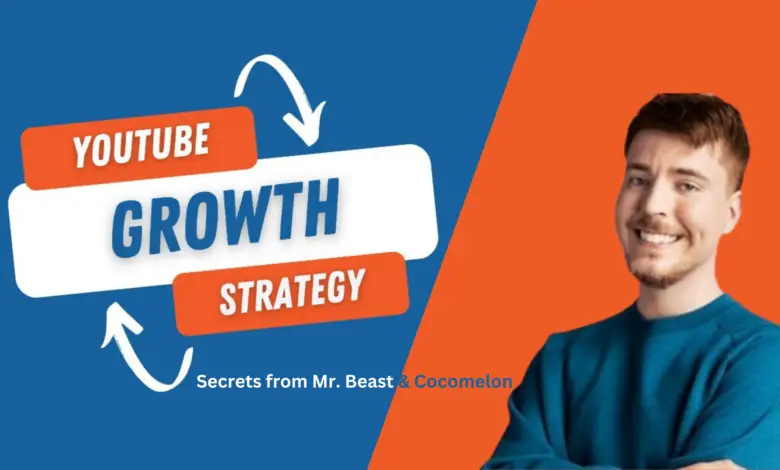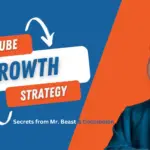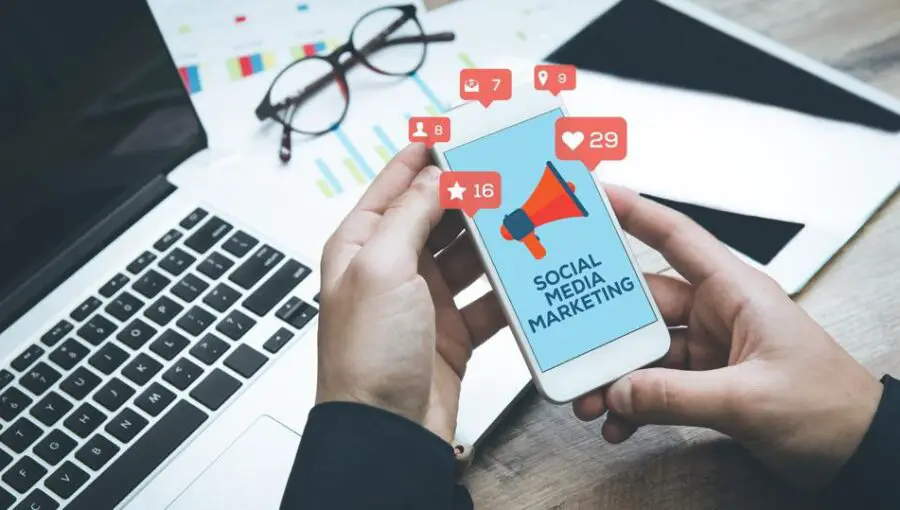YouTube growth strategies are always a hot topic, especially for marketers. With most marketers planning to ramp up their YouTube budgets this year, it’s no surprise many see it as the platform with the most potential for growth in 2024.
When discussing YouTube growth, one name always comes up—Jimmy Donaldson, better known as Mr. Beast. As the founder of Thompson Media Group, I spend a lot of time studying growth, and Mr. Beast's channel is a prime example of what works on YouTube.
![→ Free Templates: How to Use YouTube for Business [Download Now]](https://no-cache.hubspot.com/cta/default/53/b33cfd44-133a-49e3-a943-086c5679d485.png)
It’s not hard to see why Mr. Beast dominates the platform. With a staggering 240 million subscribers, his channel is second only to YouTube's top spot. While there are countless reasons for his popularity, the one strategy I consistently recommend to my clients focuses on broadening their perspective of their ideal audience.
YouTube’s Power Players Use This Growth Strategy
So, what’s the million-dollar strategy for growing both your audience and customer base? It’s simpler than you might think: inclusion marketing. That’s right—by making your content accessible and relatable to a broader audience, you can exponentially increase your reach. In fact, I’ve built an entire consulting business around helping brands scale through inclusion and belonging in their marketing efforts, so I know a winning strategy when I see one.
Take Mr. Beast, for example. One of the keys to his massive growth is offering his content in multiple languages—a form of inclusion marketing that’s proving to be game-changing. Reed Duchscher, Mr. Beast’s talent manager credits this approach as a driving force behind the channel’s explosive growth.

Master YouTube Growth Strategy: Global Expansion with Inclusion Marketing
In today’s competitive landscape, getting your content in front of more people is key to driving growth. The strategy? Expanding your reach through inclusion marketing. By localizing your content for diverse audiences, you expose your brand to more qualified viewers who share the same problem your brand solves. More eyes on your content equals more engagement and ultimately, more customers.
Global brands like McDonald’s, Netflix, and Nike have long understood this. They localize their content to meet the needs of different markets. The principle is simple: people may speak different languages, but they often share the same challenges—and solutions.
As an inclusion marketing consultant, I emphasize to clients that growing through diversity has never been easier or more cost-effective. I often discuss practical ways to leverage inclusive marketing on my podcast, Inclusion & Marketing. One episode dives deep into how to grow your brand globally by localizing content.
And it's not just global giants like McDonald's embracing this strategy—YouTube creators are leading the charge.
The YouTube Powerhouses Using This Strategy
Creators like Mr. Beast, Cocomelon, Kids Diana Show, and Like Nastya have mastered the art of reaching a global audience by offering content in multiple languages.
- Mr. Beast has 240 million subscribers thanks to strategies like multi-language content delivery. His manager, Reed Duchscher, has credited localization as a significant factor in the channel’s growth.
- Cocomelon and Kids Diana Show follow suit, offering localized versions of their videos to capture audiences worldwide. In fact, Kids Diana Show has gained an additional 72 million subscribers just by localizing content across multiple language channels.
But this isn’t just for kids’ channels. Even business-focused brands like GaryVee, VidIQ, and IKEA have leveraged inclusion marketing to expand their reach.
How to Reach a Global Audience
The beauty of this strategy is that you don’t need to create dozens of different videos. You can create one high-quality video and then localize it using dubbing, subtitles, or other voiceover techniques. Here's how creators implement this:
1. Language-Specific Channels
Many creators, like Cocomelon and Like Nastya, run multiple language-specific channels. This approach allows them to cater to specific language-speaking audiences with localized content.
- Kids Diana Show has amassed 119 million subscribers on their English-language channel, while adding another 72 million across their language-specific channels.
- Like Nastya boasts 113 million English-language subscribers, with 82 million more on her localized channels.
2. One Channel, Multiple Languages
The other option is to keep it all on one channel. Mr. Beast initially had separate language-specific channels, but in 2022, he pivoted to a single-channel approach using YouTube’s multi-language audio feature. This allows creators to upload different audio tracks and
thumbnails for the same video, tailoring the experience for various audiences without managing multiple channels.
With this feature, when viewers from different regions watch a video, YouTube automatically plays the audio in their native language. Early tests of this feature showed a 15% increase in watch time from views in non-primary languages, demonstrating how effective it can be for global growth.
How to Localize Your Brand's Content
To successfully localize content for your brand, it’s crucial to deliver a seamless customer experience. From my conversations with underrepresented consumers, a common frustration is feeling overlooked when content isn’t made accessible to them in their native language.
Here are a few ways you can ensure your localization efforts resonate with diverse audiences:
1. Human-Dubbed Content
Top creators like Mr. Beast rely on services like Unilingo to produce professional voiceovers that match the original content’s energy and tone. Human dubbing provides a better viewing experience by keeping the voice and lip movements in sync, making it feel more authentic to the audience.
2. AI-Dubbed Content
If hiring human voice actors isn’t feasible, AI dubbing can be a viable alternative. Many AI tools can translate and dub content quickly. However, to avoid issues with translation nuances and tone, it’s essential to have a certified translator review the final product.
The key here is transcreation, where the goal is not just literal translation but capturing the essence of your message while ensuring it aligns with the audience's cultural context.
3. Subtitles in Multiple Languages
Another option is adding subtitles. YouTube allows creators to upload subtitle files in different languages, making videos accessible without altering the original audio. Subtitles are an excellent, low-cost option for expanding your audience.
The Path to Global Growth
The lesson from Mr. Beast, Cocomelon, and other top YouTube channels is clear: growth comes from meeting your audience where they are. Whether through dubbing, subtitles, or language-specific channels, localizing content can unlock vast opportunities for global expansion.

YouTube allows creators to fully localize their content by offering more than just audio options. You can also upload localized thumbnails, titles, and video descriptions, ensuring a consistent and tailored experience for viewers in their native language. This level of personalization is crucial for engaging a global audience.
When a user clicks on your video, they will hear the original audio, but thanks to localization, they can read the subtitles, titles, and descriptions in their preferred language. This seamless integration of localized elements creates a more inclusive and enjoyable experience, making it easier for international audiences to connect with your content and your brand.
By taking advantage of these localization features, you can ensure your content not only reaches a wider audience but also resonates more deeply with them, boosting engagement and brand loyalty.

The same principles apply when it comes to subtitle translation. Whether you're dubbing or adding subtitles, always aim for high-quality translations that have been either transcreated or verified by human translators. This ensures your audience gets an authentic experience that feels natural, rather than robotic or clunky.
Break Through the Noise with Inclusive Video Content
To truly grow your YouTube channel and your business, you need to think beyond your existing audience. This means adopting inclusive strategies that allow you to reach new, diverse viewers from around the world.
Start small. Don’t feel like you need to have everything perfect from day one. Implement the strategies you can right now—whether that’s adding subtitles, dubbing your most popular videos, or localizing your thumbnails and descriptions. Then, as you gain more insights into your new audience, you can continue to refine and improve your content to meet their needs.
Over time, you’ll see how inclusive content helps you form new relationships with global audiences. These relationships aren’t just about growing your subscriber count—they're about helping your audience connect with your content in ways that empower them to succeed.
At the end of the day, that's what we all want, right? To help others succeed—and by doing so, we succeed as well.



![→ Free Templates: How to Use YouTube for Business [Download Now]](https://no-cache.hubspot.com/cta/default/53/b33cfd44-133a-49e3-a943-086c5679d485.png)



